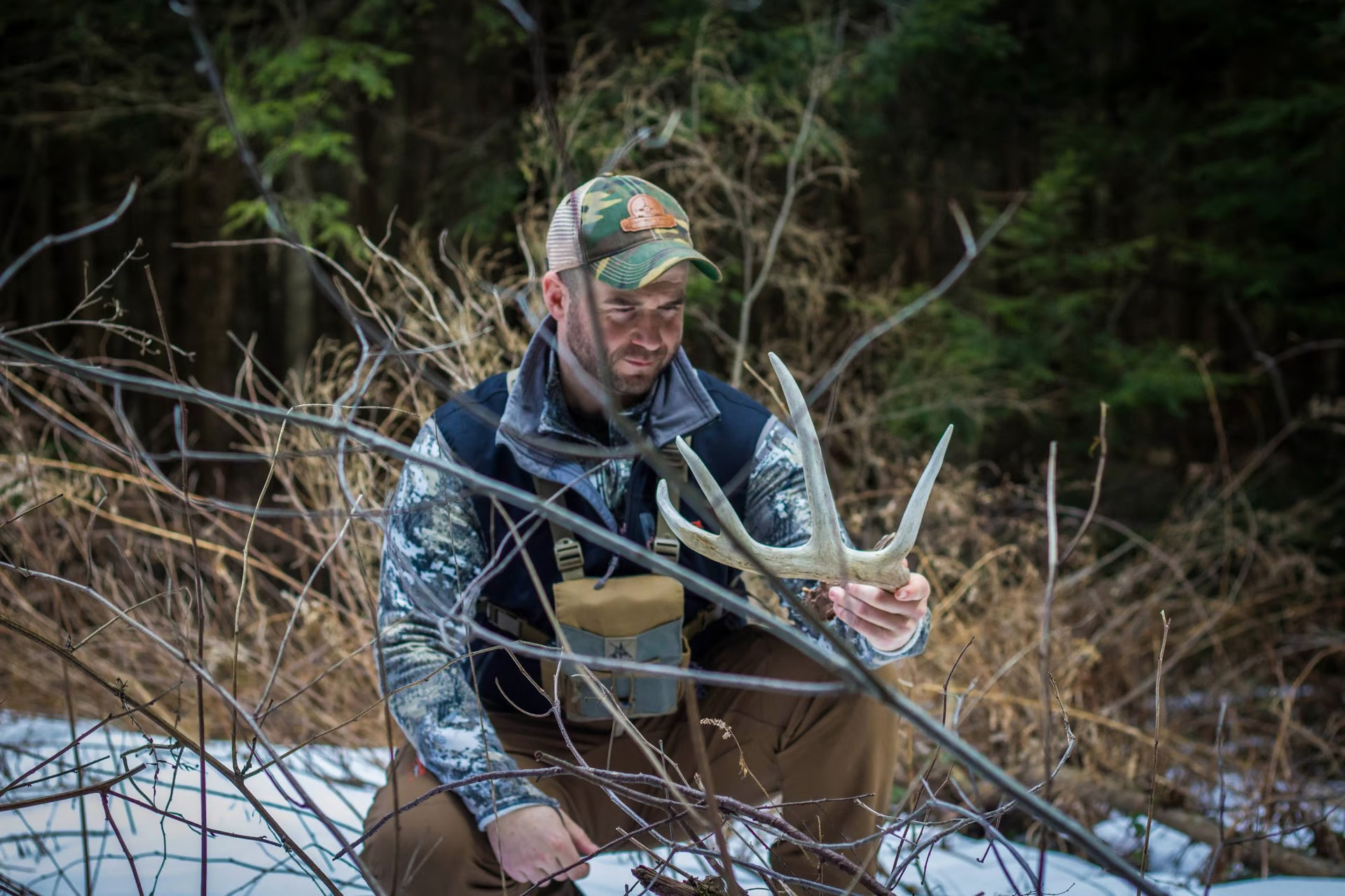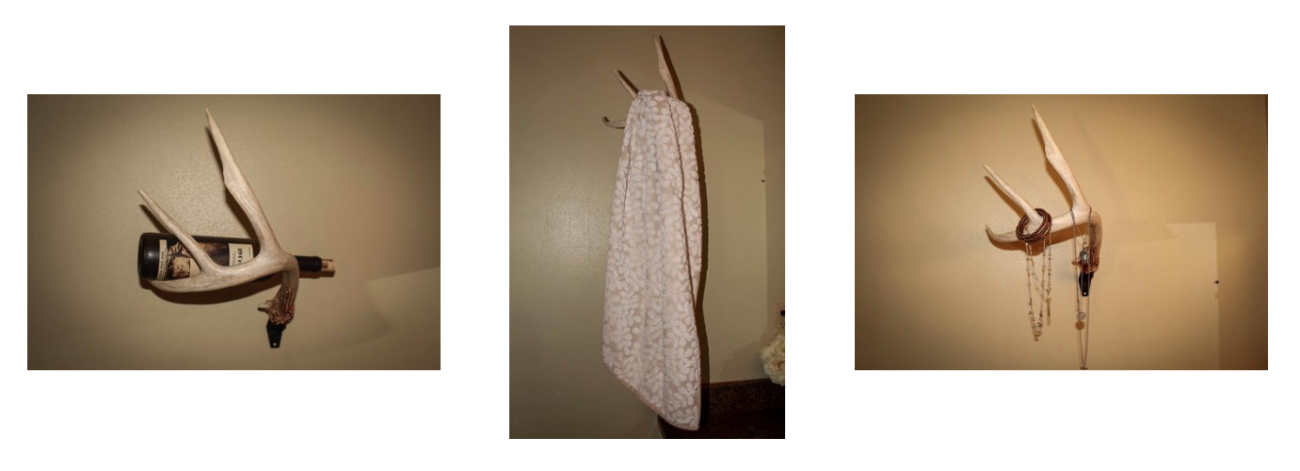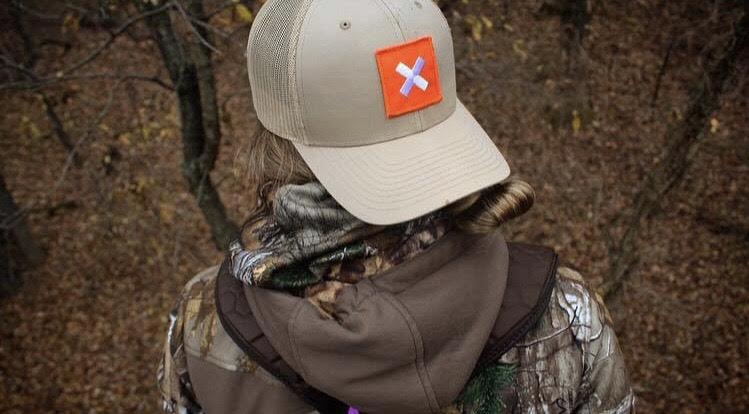

Whitetail sheds! WHO doesn’t love to walk up on a freshly shed antler, off a mature buck? Heck, I even enjoy finding the little guys too! Shed hunting has blown up in popularity over thelast few years, and it’s no surprise that this trend is here to stay! Sheds can be used for decoration, sold, displayed proudly AND paint the picture of a buck, so we have more clues to figure out his puzzle come fall! Regardless of your reasoning for shed hunting, we all want to find as many sheds as we can, right? That’s certainly the goal! I’ve been shed hunting for over 25 years now and during those years I’ve found that time and time again, certain spots just always produce antlers every spring! Here’s my top five shed spots to look at every spring.



South Facing Slopes
In my personal opinion, this spot provides the most consistent antler findings, year in and year out, for a few good reasons! For starters, during this time of the year, deer need good bedding cover that provides shelter from the winter cold and as much warmth and sunlight as they can get. South facing hillsides and slopes receive the most sunlight hours and warmth during the day, which makes them ideal bedding areas! Because of this daily sunlight amount, these spots are also the first areas to grow back green shoots, sprouts and fresh growth inside the timber. All of these new growths are extremely sought after by wildlife and especially deer, which makes these areas a great two for one area for a buck to spend a lot of his time in! They can bed and graze on new growth throughout the day, all in one shot! Due to the amount of time that a buck will spend in these areas, there’s a good chance he will drop his antlers here as well. I like to work these areas from the bottom up, scanning ahead and slightly above me on every pass. I use my Onx mapping system to keep myself on a good line of travel, moving my way up the hillside, which ensures that I cover the whole area. It’s very important to cover all of these areas as bucks will probably have multiple bedding areas per hillside and a shed could be in and around any of these spots. And don’t forget your sunglasses, because at some points the sun will be in your eyes, which makes finding sheds in the timber a lot more difficult!
Creek Crossings
It’s no secret that when a buck lifts his head up or down quickly and direct, this can cause those antlers to “Pop” off! It’s also no secret that deer love to take the path of least resistance, especially inside the timber! With that being said, creek crossings are an excellent area to look for sheds! A lot of deer will typically have to slide down one side and then gallop up the other side, which causes quite the stir for a set of antlers ready to pop off! Many times, I’ve found sets of antlers not far from each other close to these crossings, where a buck lost one side and then shook the other side off, or took a few more bounds and it popped off as well. I like to pay particularly close attention to bends in the creeks and rivers, where it’s a natural funnel for deer to use. Deer love the path of least resistance, so naturally at the bends, typically water is more shallow and it’s easier to cross! You should find well beaten trails and a ton of tracks at these crossings, which confirm they’re being used a lot.



Fence Lines and Fence Rows
In agricultural country, which is most of the famed Midwest, fence rows and fence lines are found all over! These naturally made funnels are typically in between fields and or wood lots. Usually, they’re not very wide areas, but can be ultra long as many of them can run the full length of fields. Bucks will use these areas as a way to go from one agricultural field to another, or to get from a patch of timber to another without being out in the wide open! Because of this highly used method of travel, deer will spend a lot of time throughout the year in and around these places, making them a great spot to look for fallen antlers.
Another great opportunity for sheds in these areas is if a fence is present. Old or new, a fence makes an obstacle that a buck must go over, or under to get to the other side. By doing so, he must duck under, or crawl and in both instances this can quickly pop antlers off! I love to walk fence lines especially for this reason, as I’ve found a lot of sheds over the years within 20 yards of the fence itself!
Agriculture Fields
It’s no surprise that where a buck spends most of his time, will be where your best odds of finding his antlers are! With that being said, bedding and feeding areas are where a buck spends the majority his time and for good reason! When it comes to agriculture fields, I have a very meaningful plan, when searching for them. It’s very easy to just wander around aimlessly, while walking in big crop fields, but this will not equal the best results and end up in your missing a lot of sheds. Instead, I like to break each field down on my On X maps and formulate a plan to cover the whole field by working back and forth. I will turn my “tracker” mode on, in my OnX maps, so I am able to see exactly what route I’ve taken and to make sure I’m not missing any areas. I think it’s very important to note that some fields will take much longer to scan and cover than others, like a cornfield for example, which requires a slower paced walk because it’s harder to spot a shed here than in a picked bean field, which has much less left in the field, making it easier to spot sheds in. All in all, take your time and have a good plan in agricultural country and you’ll be more successful at finding sheds!

Regenerating Clearcuts
I think this may be one of the most highly overlooked spots for deer sheds that there is! Regenerating Clearcuts provide a whitetail with so much feed and bedding, that most do not even realize! For example, due to the lack of tree canopy and sunlight being able to hit the ground quite easily, these spots will have new growth growing in them faster than anywhere else! The new, green shoots and sprouts from the ground are highly desired by deer and most certainly buck’s will be there as well. These areas offer a great place for briars to grow as well, especially green briars, which deer love to munch on! Now when it comes to bedding and areas to stay put for the day, the edges of these Clearcuts will be thick and provide a great amount of cover for a buck. The hard edgeline between timber and the clearcut creates a natural spot that deer love because of the diversity that it brings to the table. Basically, these two edges give a buck security cover/bedding and also a good place to munch on new growth throughout the day without having to travel far from their beds. In these areas, I really like to work them from the bottom up and I try to focus on the clearcut first and then I’ll cover both sides of it. I don’t tend to put all three together all at once because I feel like it’s easier to miss some spots, so instead I break this up into two or three parcels to search individually! Make sure you note the “south” facing sides of these areas, as they will provide the best nearby bedding, which is extremely important to a buck and a great spot for him to leave behind his headgear for YOU!
I hope these five spots serve you well this spring, Goodluck and keep your eyes to the ground and scanning side to side!







